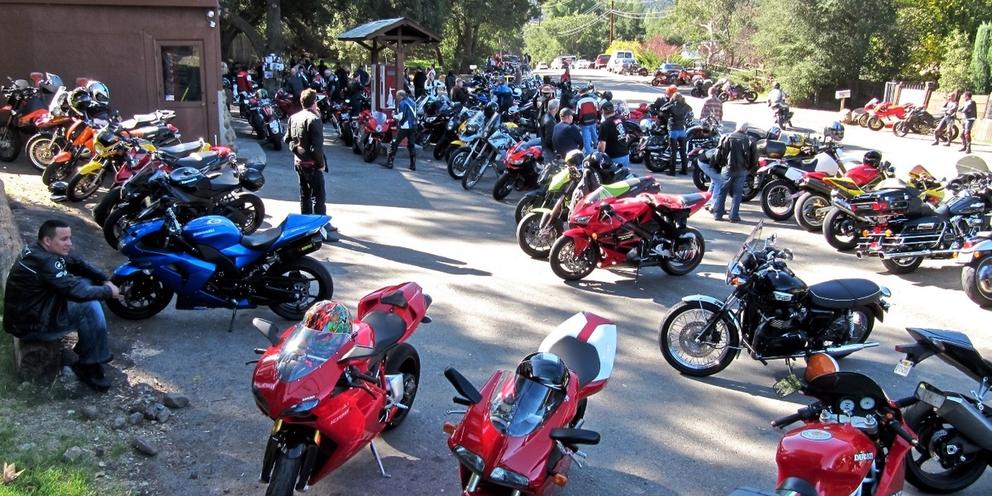
What Kind of Motorcycle Should I Get? A Guide to Motorcycle Types
steve lyon from los angeles, ca, usa, CC BY-SA 2.0 via Wikimedia Commons
Motorcycles are becoming increasingly popular amongst road users across the world. While motorbikes have always represented freedom (not least from traffic), these days more and more drivers are turning into riders to take advantage of reduced start-up and running costs, increase their fuel efficiency, and reduce their carbon footprint.
In fact, it’s easy to be overwhelmed by the choice available on the motorcycle market today. As a newcomer, how can you tell your cruisers from your choppers, or your baggers from your boppers? That’s not to mention the choice of brand, engine size, modifications, and gear, all of which can result in a nearly endless combination of options.
What Is the Purpose of the Motorcycle?
Before getting too in the weeds on the specs of any one vehicle, ask yourself one simple question: what is this motorbike for? Not all bikes are suited to all kinds of riding. That’s why most modern manufacturers will produce at least one model of every type of bike to appeal to as many consumers as possible, so, for now, put aside any brand loyalty you have. Start by asking yourself: what was it that drew you to the idea of a bike in the first place?
Was it the idea of touring cross country, or needing something to zip through city traffic on the way to work? Were you picturing yourself on highways or dirt tracks? If you had to choose, would you want style over substance, or something ugly and practical?
These aren’t all either/or questions — there are plenty of bikes out there that expertly tread the middle ground between these options. However, knowing which way you’re leaning on them will help you narrow down your search for the perfect motorcycle.

Image Credit: sms467 / Pixabay
How Much Power Do You Need?
Once you’ve settled on a type of motorcycle to look for, the choice doesn’t stop there. Most manufacturers will offer a range of sizes in each model. Size, in this instance, refers to engine capacity, which is measured in cubic centimeters, or cc. Without getting into all the technical jargon, bike engines range from as little as 50 cc to as high as 1800 cc, and generally the greater the cc of a bike, the better torque, mileage, and horsepower it has. Off-road bikes and smaller commuter models are usually between 250 cc and 400 cc, city and highway bikes lie generally in the 650 to 900 range, while superbikes and top-end cruisers top 1000 cc.
An important caveat here is that cc doesn’t directly compare across motorbike types. A 400 cc cruiser will provide a very different experience to a 400 cc sportbike. That’s why it’s important to start out with what type of bike suits your needs, then compare power within the type and model.
It’s also important to bear in mind the experience of riding different sized engines. Pushing a 400 cc engine to its limits is a different (and usually more satisfying) experience than trying not to break the speed limit on a 1500 cc hyperbike. There are 600 cc dirt bikes out there, but do you want to be going 125mph over bumpy dirt paths? On the other end of the spectrum, a cruiser under 300 cc might not be enough to tour across the country with a load of luggage.
All of this comes down to what you want to use the bike for. One general rule that applies is that a bike around 300 cc is a good starter for someone who has never ridden before. Just make sure to check the manufacturer’s recommendations before making a commitment.
How Much Are You Willing to Spend on a Motorcycle?
Money is a significant factor in choosing a motorcycle. A top of the range dirt bike might cost only a fraction of some of the cheaper sport-tourers and upping the engine size will also up the price, no matter the model. If price is a concern, consider whether you can buy a used machine rather than a brand-new bike. Buying second hand can be riskier if you don’t know the warning signs to look out for, so be wary if the type you're after has a lot of complicated parts that could be faulty.
If good used options are available where you are, think about starting off with a cheaper brand or model. First-time bikes tend to get damaged, whether it’s in a minor fall, a major accident, or by other vehicles. You might want to cut your teeth on a cheaper model to save yourself a lot of expensive repair bills in the early days.
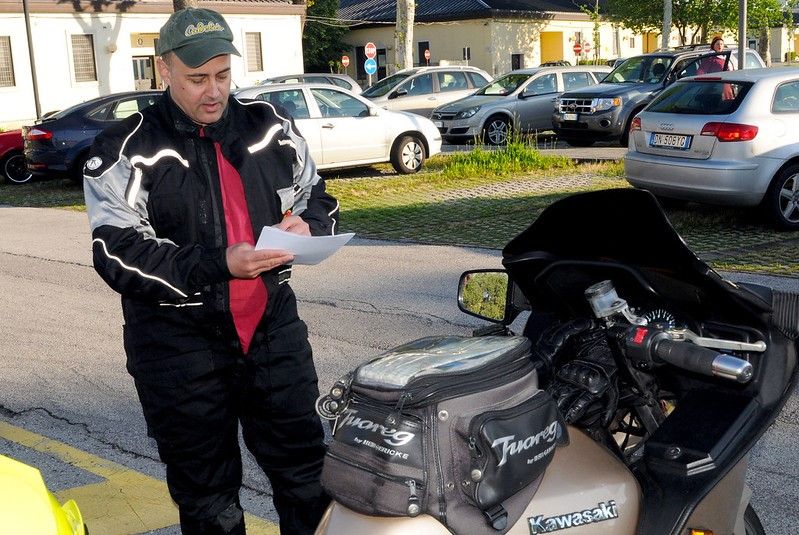
Image Credit: US Army / flickr
Features to Look for in a Motorcycle
Knowing the type, size, and price range of your ideal bike should narrow down the field considerably, but even within those niches there are customization options that will affect your overall riding experience.
- Windshield: bikes without wind protection might look sleeker, but they’re certainly less practical on longer drives. Think about whether you're happy to put up with rain in your face and flies in your mouth.
- Storage: traditionally, motorbikes were the definition of traveling light. But in these days of expensive tourers, the option to expand storage is available to any rider. How much storage you need will depend on what you’re using your bike for.
- Sound: while many bikers love leaving a deafening growl in their wake, regular noise complaints from your neighbors really can really dampen your riding experience. Make sure to hear what your prospective bike sounds like before you buy — after all, you’re going to have to sit on top of it.
- Tech: anti-lock brakes, traction control, GPS, audio systems, heated seats, and more. What do you need to be comfortable? Most bikes can be augmented with every gadget you can think of, but each one adds weight, maintenance requirements, and money to the tab.
- Fuel economy: buying your motorcycle is one cost, keeping it running is another. Some bikes might appear cheap upfront, but factor in how many miles it does to the gallon, and you might find your budget buy will cost you more than a higher-spec machine with a more efficient engine. And, for those who really want to save on fuel, there are always electric bikes.
Safety Features
Motorcycle safety is a major consideration when picking any bike. While most models now come with in-built anti-lock brakes as standard, it’s worth looking into what other safety options are available.
- Upgraded windshields can help reduce drag and provide some additional protection from head-on collisions.
- Turn signals are sometimes taken off bikes so that they don’t interfere with the sleek aesthetic. Adding dedicated turn signals helps you be more visible in traffic, keeping you and the vehicles around you safer.
- Auxiliary lights can be added to the front, rear, or undercarriage of the bike to make you even more visible at night.
- Tire sealant is applied on the inside of the tire to protect against minor punctures.
Finally, it should go without saying that wearing adequate safety equipment is the best way to keep yourself safe on a bike. Invest in a quality helmet with a clear protective visor that fits snugly on your head. Wear all-weather protective clothing to keep you warm and dry in all weathers, as well as gloves to improve your grip on the handlebars and boots to plant yourself firmly on the pedals. Make sure your first bike isn’t your last.
Features to Look for in a Used Motorcycle
If you’re buying a used motorcycle, knowing what elements to look for is a major part of buying a quality, long-lasting vehicle.
Appearance: in buying used bikes, judging a book from its cover is a good place to start. If a bike looks like it hasn’t been properly cared for, it’s likely the mechanics have been neglected too. This doesn’t have to be a red flag if you’re buying a bike to renovate or restore, like a vintage bike, but it’s worth knowing what you’re getting into. Look for tight spots where dirt and grime can accumulate. Someone who cares about their machine will make sure to clean those areas, giving you a good idea that they’ve taken care of the machinery.
Frame: look for dents, cracks, or scratches in the frame, underneath the bodywork. If you can’t see any, feel for them with your hands. These are early warning signs that the bike has been in an accident. The smallest fracture in the frame can endanger the integrity of the whole bike and be monstrously expensive to repair.
Exhaust: check the exhaust is mounted firmly, reducing the chance of vibration damaging any essential parts. Make sure you check this before turning on the bike, and if possible, make sure the seller hasn’t turned it on recently so that the bike is cold for inspection. Get on your back underneath the bike to check the exhaust header too.
Brakes: sit on the bike but don’t start it. Take it out of gear and push it forward, then apply the brakes. They should apply smoothly and bring the motorcycle to a complete stop without any noticeable noise. The break level should contract and release smoothly. If there is any noise, stuttering or slackness in the brakes or brake levers it’s a sign of worn parts that will need replacing.
Clutch: while you’re on the bike, move it into first gear. The bike should roll smoothly. Squeeze the clutch to feel if it contracts and releases smoothly, without any interruption. Some slack in the clutch is normal and can be adjusted, but any disturbance when it’s engaged is a sign of a bigger internal problem
Engine: now you can turn on the bike. This is called a cold start and it’s an important indicator of the engine’s condition. Listen out for any knocking, rattling, or similar noises, these are a sign of trouble. Also, look at the exhaust again for any signs of smoke. A dirt bike might have some smoke emitting from the exhaust, but a street bike should not.
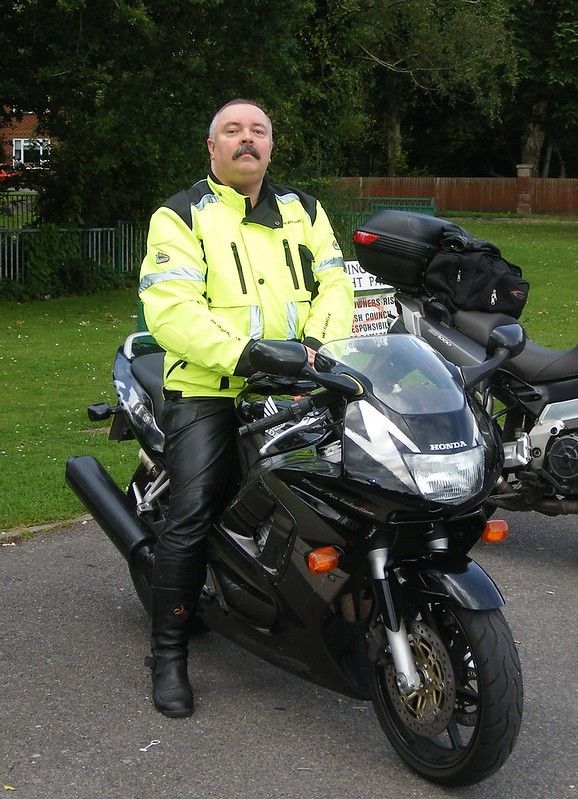
Image Credit: Steve Parker / flickr
How to Choose a Motorcycle That Fits Your Height and Size
Picking the type and specs of a motorcycle is one thing, being able to handle it properly is another. The best motorbike for you is one that suits your height, weight, and build so that you can ride it confidently and comfortably wherever you go.
Finding the Right Type of Motorcycle That Fits You
The best way to check out a motorbike is to get it in front of you. Seeing and feeling the machine with your own body allows you to get a sense of what it would really be like to ride it. Three of the things you are looking for are:
- Weight distribution: how does it feel to lean side to side, backward and forwards? Can you handle the weight of these movements? If they feel cumbersome or difficult, the bike is too heavy.
- Control distance: can you easily reach the foot pedals, handlebars, and dashboard controls from the seat? If you must stretch, the bike is too big.
- Bike height: can you touch the floor with your feet while you’re on the bike? If you’re not able to touch your toes to the ground while standing will make it difficult to balance the bike when stationary.
If you can’t get the bike in front of you, it’s not the end of the world. The manufacturer will publish measurements on their websites, and there are even some online tools that can help measure the size of a bike against your height and inseam.
Signs of a Poorly Fitting Motorcycle
Riding a new motorbike can be an exciting or even nerve-wracking experience, but if you feel awkward sitting on a machine, it’s worth investigating why. Start by asking yourself the following questions:
- Can you swing your leg over the seat easily?
- Can you touch the ground with both feet whilst sitting on the bike? What about when standing with it between your legs?
- Can you sit comfortably on the seat? For how long?
- Can you reach the handlebars easily from the seat?
- Can you reach the foot pedals?
If the answer to any of these questions is no, it might be the wrong size for you.
How to Adjust Your Motorcycle for a Perfect Fit
If you’re completely set on a specific machine that doesn’t quite fit, there are ways to make it work. Bikes with great suspension, like dirt bikes and dual sports, sag to accommodate major bumps in the road. That means they might look too tall for many riders but may in fact be too short for others. Swapping out or modifying the suspension on these machines will adjust the height to suit your needs.
Another way to adjust a bike is through its seat. Bike seats are designed with a particular riding style in mind. For example, tourers and cruisers have bigger seats with lots of padding to make long rides comfortable, adding significant height to the bike. On the other hand, cheaper bikes designed for shorter city trips have smaller seats to save on materials. Replacing the seat with something a different shape or size can add or reduce height.
What Kind of Motorcycle Should I Get?
With all of these considerations in mind, let’s explore a few of the options available in today’s motorcycle market.
Beginner Motorcycles
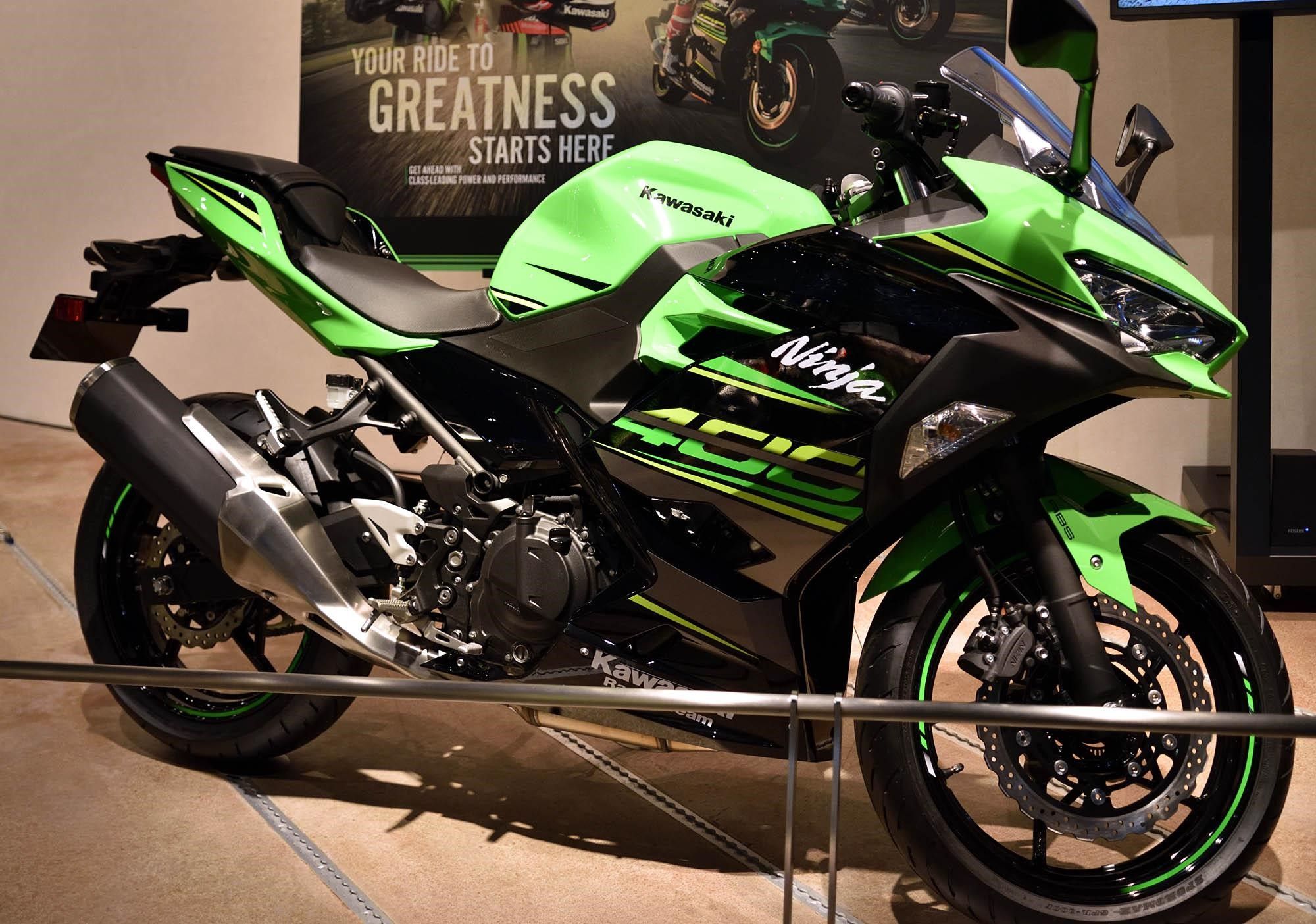
"File:Kawasaki Ninja 400" by Rikita is licensed under CC BY-SA 4.0
Before we get into all the bells and whistles, let’s start at the basics. For the absolute motorbike newcomers, there are a few specifications to look out for. Motorbikes between 300 and 400 cc are ideal, as they will be fast enough to keep pace on a highway but are cheaper upfront and require less mechanical knowledge to maintain. Also make sure that the bike has essential safety tech, like anti-lock brakes (ABS) and traction control, as well as the other safety features referenced above.
Standards

"HONDA CB1100 - 2009 Tokyo MotorShow" by Fotois.com / Dmaniax.com / 246g.com is licensed under CC BY 2.0.
For many years, a “standard” motorcycle was any ride that wasn’t classified as a dirt bike. Even if you know nothing about motorcycling, you’ll be able to picture a standard. Two wheels, a simple body, no windshield, and ridden in an upright seated position. Nowadays, with the motorbike market getting more and more specialized, it’s hard to find a modern bike that is a genuine standard in the traditional sense, so most standards available to buy are vintage or used. But there are still a few brands making standard bikes ideal for anything from short trips to long hauls.
Vintages

"Norton Commando (1969)" by jorge.correa is licensed under CC BY 2.0.
These days vintage is fashionable across many marketplaces, and nowhere is this truer than in motorcycles. Vintage bikes bring that classic profile made popular by classic movies, TV shows, and, sometimes, our parents and grandparents. What counts as vintage varies depending on the bike. For many used bike sellers, any Japanese bike manufactured 20 years ago, or more is considered vintage. Other buyers are looking for a specific period look, and the level of detail they accept will narrow down their options. Naturally, a vintage bike is always second hand, never new, so they often require more mechanical knowledge and a bigger wallet to repair and maintain.
Sportbikes

"EICMA 2013 516 Ducati Panigale" by KlausNahr is licensed under CC BY-SA 2.0.
If you’re looking to go fast — really fast — then look no further than the sportbike. High power, quality suspension, and excellent brakes (which you’ll need) are bikes finely tuned to peak performance at the blistering speeds that only race cars can usually reach. Bear in mind that these bikes are definitely for the sprint, not the marathon. They’re not the most comfortable for long journeys, and they require a lot of skill to drive safely over great distances. Plus, be prepared to get a lot of tickets: most sportbikes will fly past the speed limit in second gear.
Hyperbikes
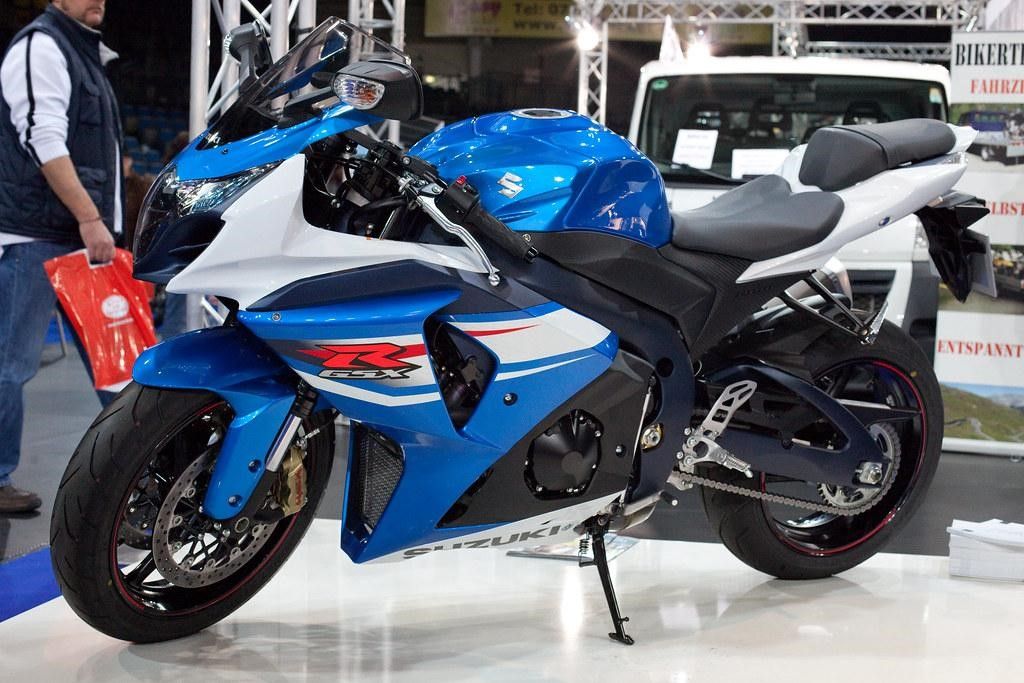
"Suzuki GSX-R 1000" by armin_vogel is licensed under CC BY 2.0.
If a sportbike isn’t enough, turn things up a notch with a hyperbike. Engines on these monsters generally start at 1000 cc and are tuned to up to 200 horsepower. They come fully decked out with the latest in motorbike technology, including slipper clutches, launch control, and the best in traction and braking safety features. Hyperbikes are the closest thing to a race bike whilst still being road legal. Safe to say these bikes are not for beginners but designed for experienced riders with a lot of money who want a new challenge from the best that manufacturers have to offer.
Cruisers
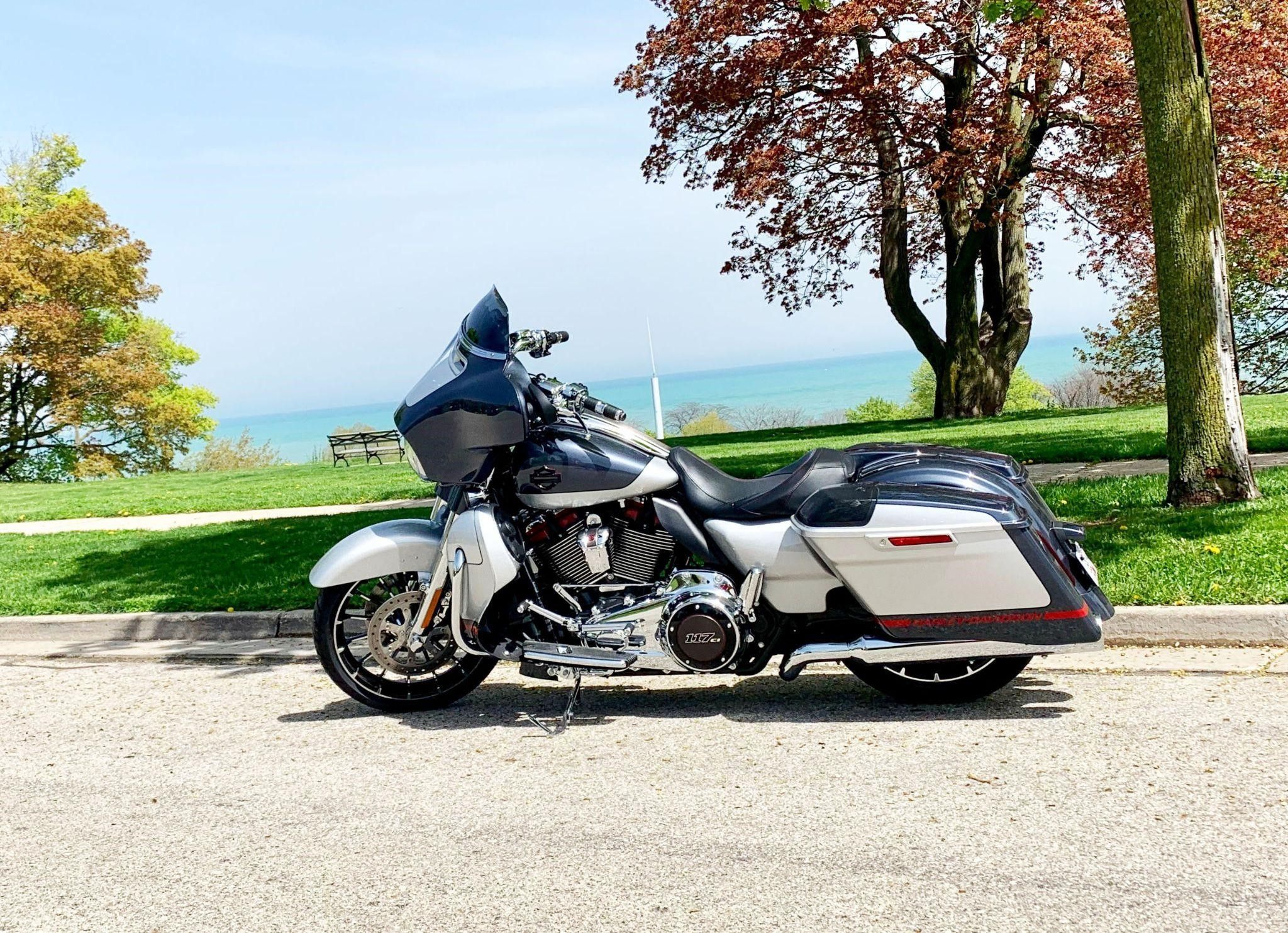
"File:2019 Harley Davidson Street Glide CVO.jpg" by Lubbad85 is licensed under CC BY-SA 4.0.
Cruisers embody a classic biker image: slouching back in a low-slung machine with high handlebars, rolling through city streets with a loud growl that will make heads turn. These are common beginner bikes, as their relaxed riding position makes them easy and comfortable to ride, as well as ideally suited to touring. However, their iconic shape comes at the price of a heavy vehicle that is easily outpaced by other kinds of bikes. Harley-Davidson dominates this genre of machine, but international brands like Kawasaki and Ducati also offer strong contenders.
Dual-Sports
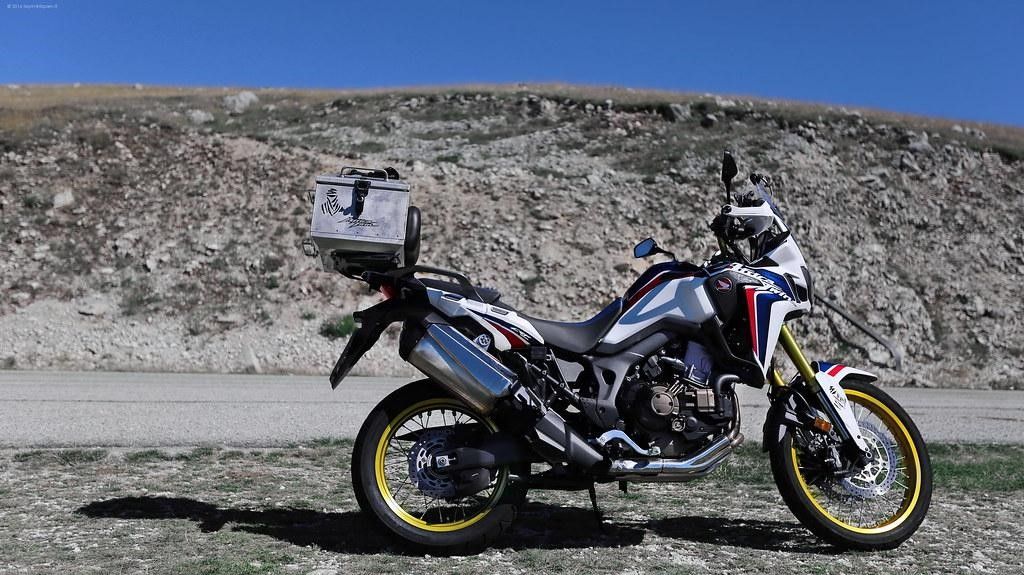
"OKIMG_7776" by Claudio Marinangeli is licensed under CC BY 2.0.
Motorbikes give you that sense of freedom that other vehicles can’t, and nowhere is that truer than with a dual-sport. Falling into two categories, Enduro and ADV or Adventure bikes, dual sports sit between the world of street bikes and dirt bikes. These multi-talented vehicles are simple, tough, and designed to let you go anywhere, with an engine and suspension durable enough for long offroad journeys, but a lightweight design that makes them easy to maneuver through narrow city streets. One thing to bear in mind: these are tall bikes, so are at risk of tipping unless you can plant yourself firmly when stopped.
Dressers (Touring Bike)
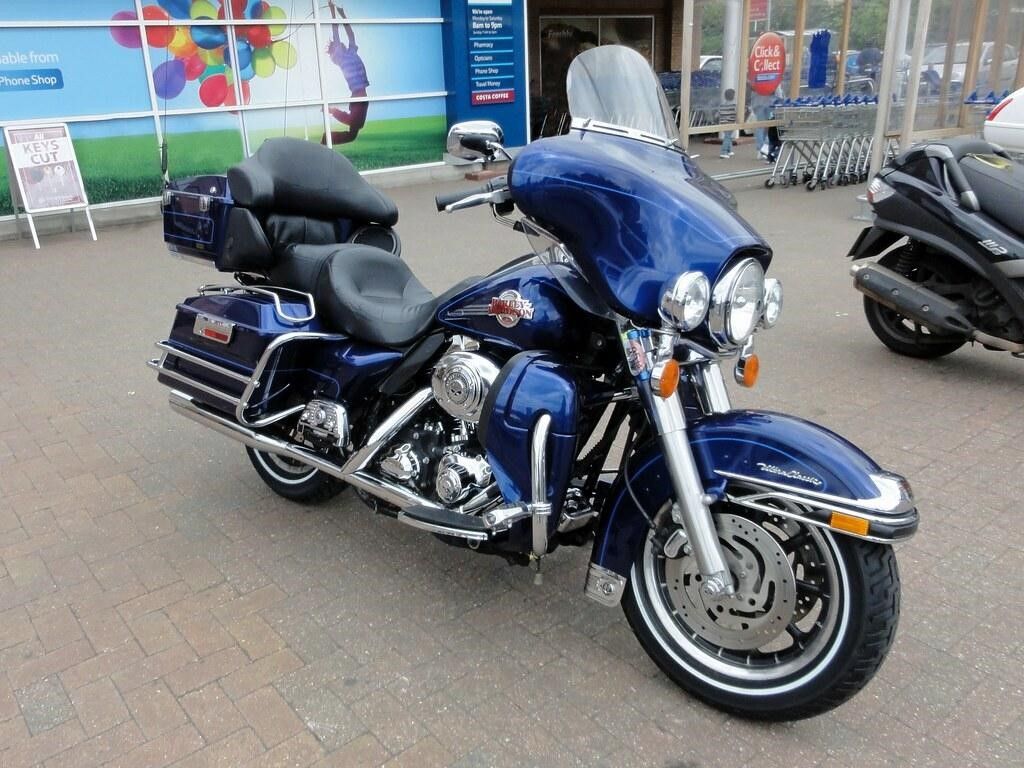
"Harley-Davidson Ultra Classic Motorcycle" by Maxwell Hamilton is licensed under CC BY 2.0.
If your road trip aspirations are firmly placed on the road, a dresser is by far the best way to tour in style. Known more generically as touring bikes, these machines make long-distance road travel comfortable, easy and, above all else, practical. Dressers come with loads of carrying capacity, and usually the option to add on more, along with a huge range of tech and gadgets, from heated seats to audio systems to built-in GPS. Plus, touring bikes are some of the most modular bikes around, so if you think of something you need, the manufacturer can probably have it installed. Naturally, all this luxury comes at a pretty penny, and at the expense of some speed.
Sport-Tourers
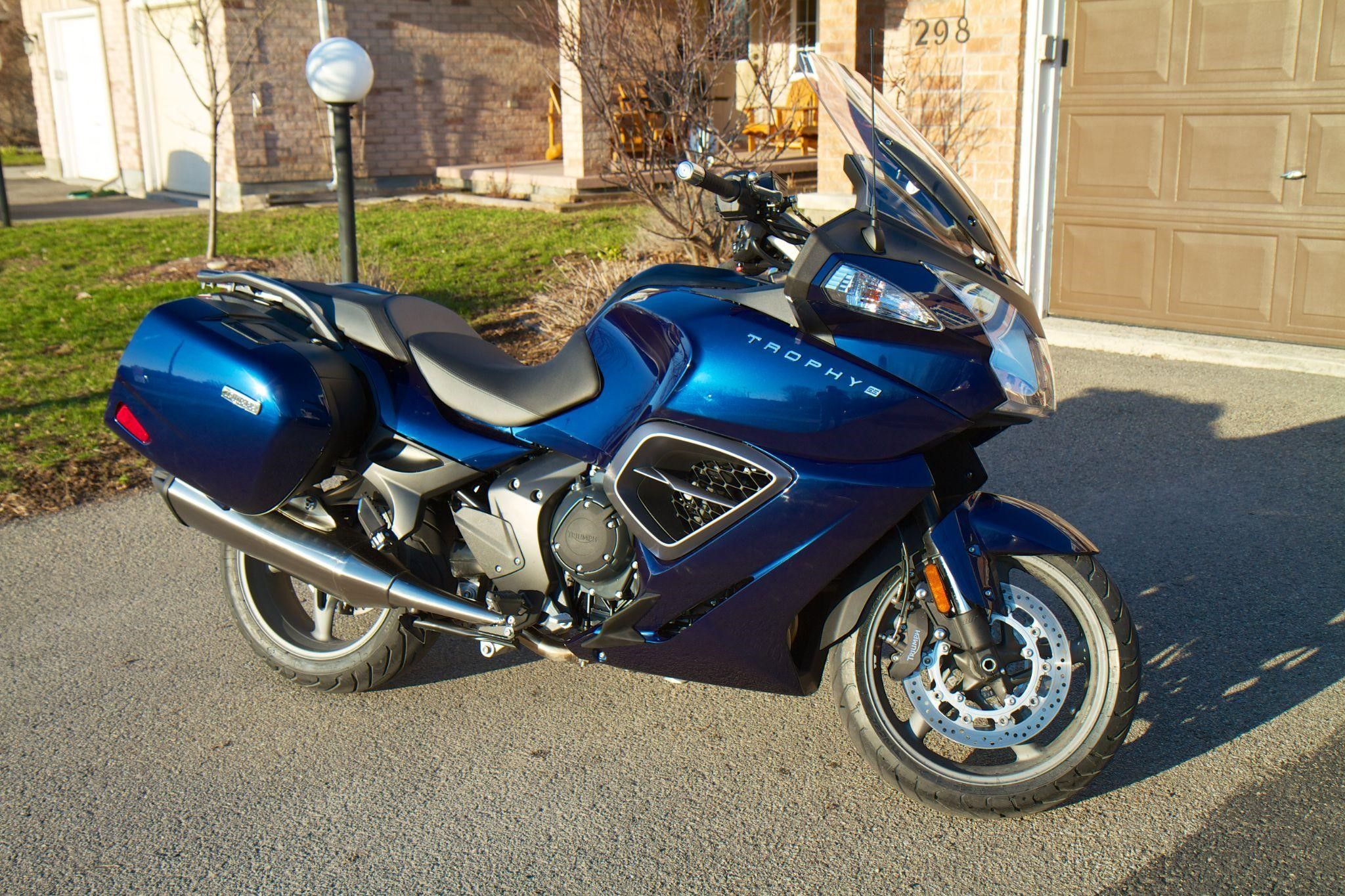
"File:2013 Pacific Blue Triumph Trophy SE.jpg" by Uberchuckie is licensed under CC BY-SA 3.0.
Sometimes, when you’re back from your cross-country road trip, you want something a bit speedier for a change of pace. Well, with a sport-tourer, you can have the power of a sportbike and the comfort of a touring bike. Like dressers, these are available with a lot of carrying capacity and tech and can be heavy and expensive. Unlike many dressers, their luggage is often detachable, their bodies and windscreens are super aerodynamic, and have the enhanced horsepower to help them take off in a flash.
Baggers
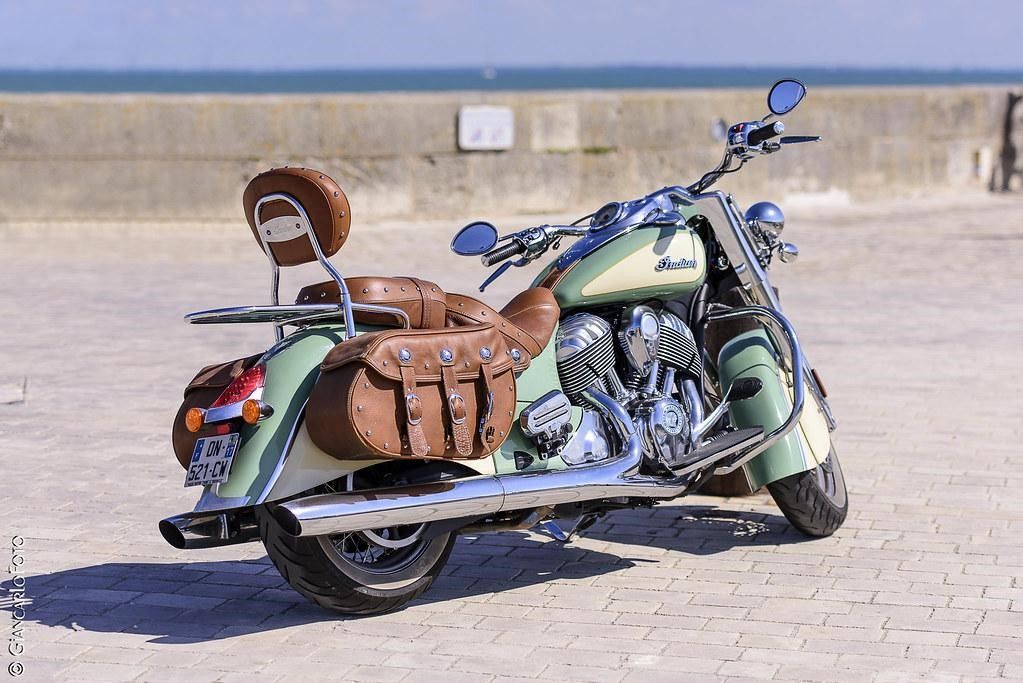
"Ile de Ré - Juin 2016" by Giancarlo - Foto 4U is licensed under CC BY 2.0.
A bagger is a dresser on a diet. Baggers are lightweight touring bikes with less gear and fewer bells and whistles, for a more minimalist touring experience. The name comes from the tendency to have removable saddlebags instead of built-in storage, to make for a more flexible riding experience. Baggers are often less expensive than major touring models (though still not cheap), making them ideal for a weekend road trip or shorter hauls where you want to maintain the simpler, clean aesthetic of a standard motorcycle.
Electric Motorcycles
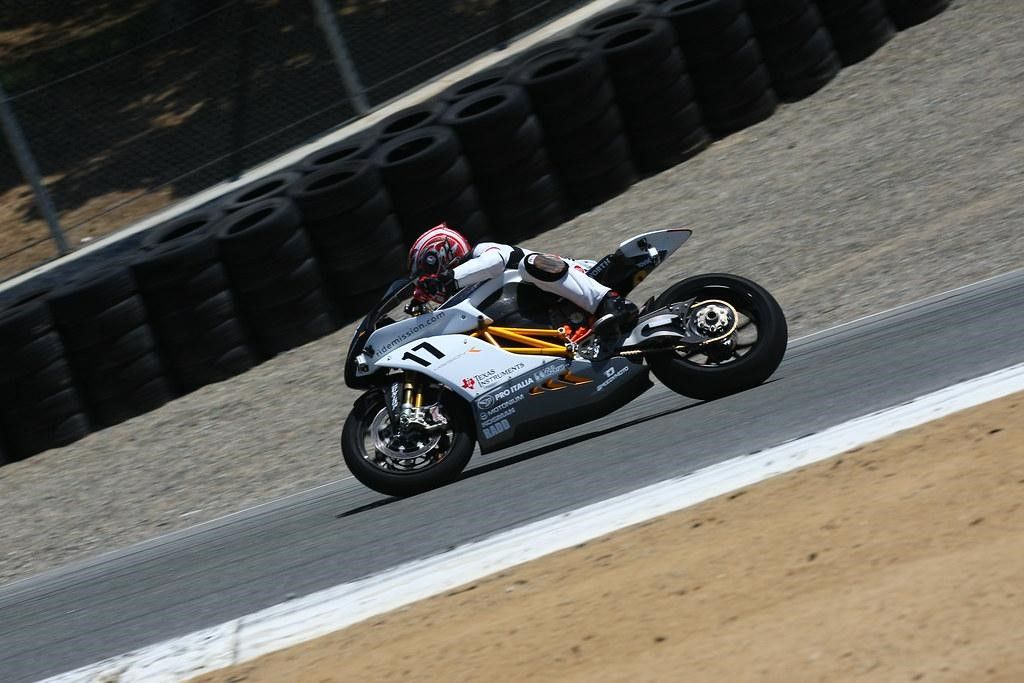
"Steve Rapp on the Mission R - Corkscrew - Laguna Seca - June 26, 2011" by MissionMotors is licensed under CC BY 2.0.
Electric vehicles are here to stay, and they’re getting better by the year. Electric bikes are quieter, smoother, and often more powerful than gas-powered alternatives, and they require little to no maintenance. Electric touring, on the other hand, is still a future ambition, as electric bikes are still building up their range and the country is still lacking in electric recharging infrastructure. As city bikes, though, it’s hard to beat them. If you have the money, that is.
Scooters

"vespa" by antmoose is licensed under CC BY 2.0.
Now, a lot of traditional bikers will turn their nose up at scooters. But the market has moved on from the zippy 50 cc machines that came to typify them and are now a popular choice for tourers and commuters alike. Many scooters come with an automatic transition, making them the ideal beginner vehicle, and get great gas mileage. They’re not in the same league as most motorcycles in terms of speed or handling, but for most city riders making short trips, they’re a great choice. Besides, it’s hard to beat the romanticism of riding a classic Vespa through the countryside.
Dirt Bikes
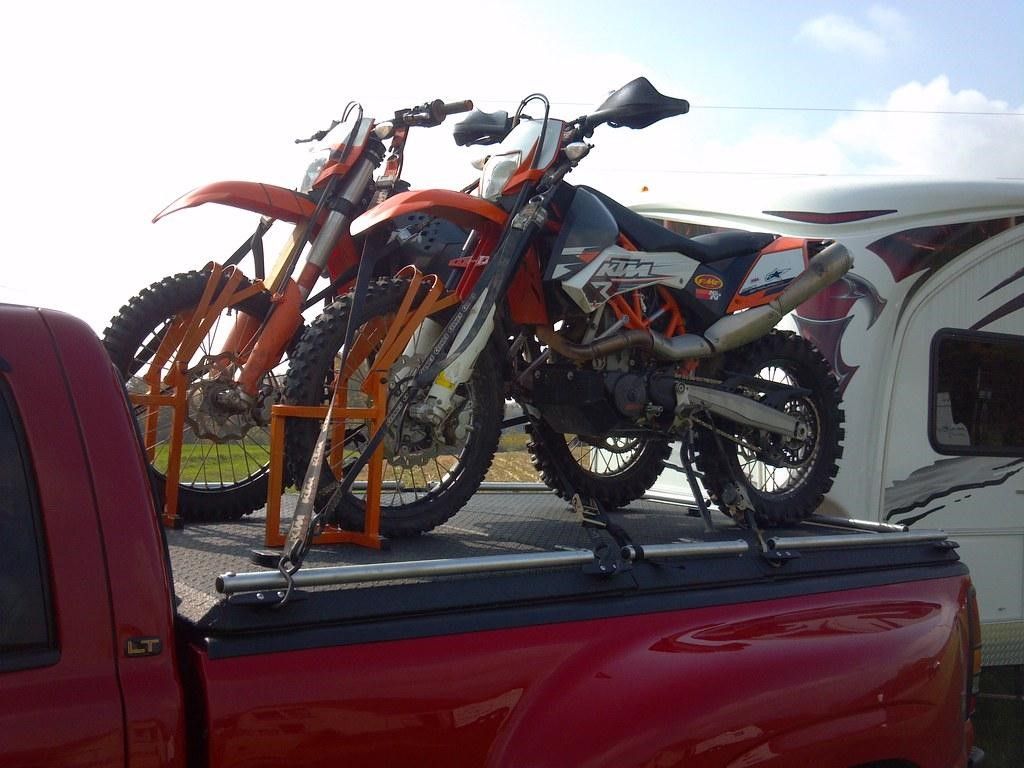
"Dirt Bikes on Black Heavy-Duty Truck Bed Cover on Pickup Pulling Trailer" by DiamondBack Truck Covers is licensed under CC BY-SA 2.0.
Dirt bikes are a great entry option for those who feel the pull of a motorbike but are nervous about getting up close and personal with cars. As the name suggests, dirt bikes are not street legal and are designed exclusively for off-roading. They’re cheap, fun, and accessible for adults, teenagers, and even kids (in appropriate sizes). Many businesses offer dirt bike rental in rural areas, but if you do buy one for yourself remember that you may need a truck or trailer to transport it to where you want to ride.
Motards, or Supermotos

"Ducati Hypermotard 1100" by Piergiuseppe Colazzo is licensed under CC BY-NC 2.0.
A combination of the words “motocross” and “standard”, motards are lesser-known cousins of dirt bikes. Also known as supermotos, these bikes take the tall, lightweight build of an off-road bike and add in sportbike parts to boost their performance and make them street legal. While the modification doesn’t go far enough to make them suitable for long-distance touring, this wild child of the motorbiking world is great fun on the track and even a pretty powerful commuter machine, all at an affordable price.
Streetfighters
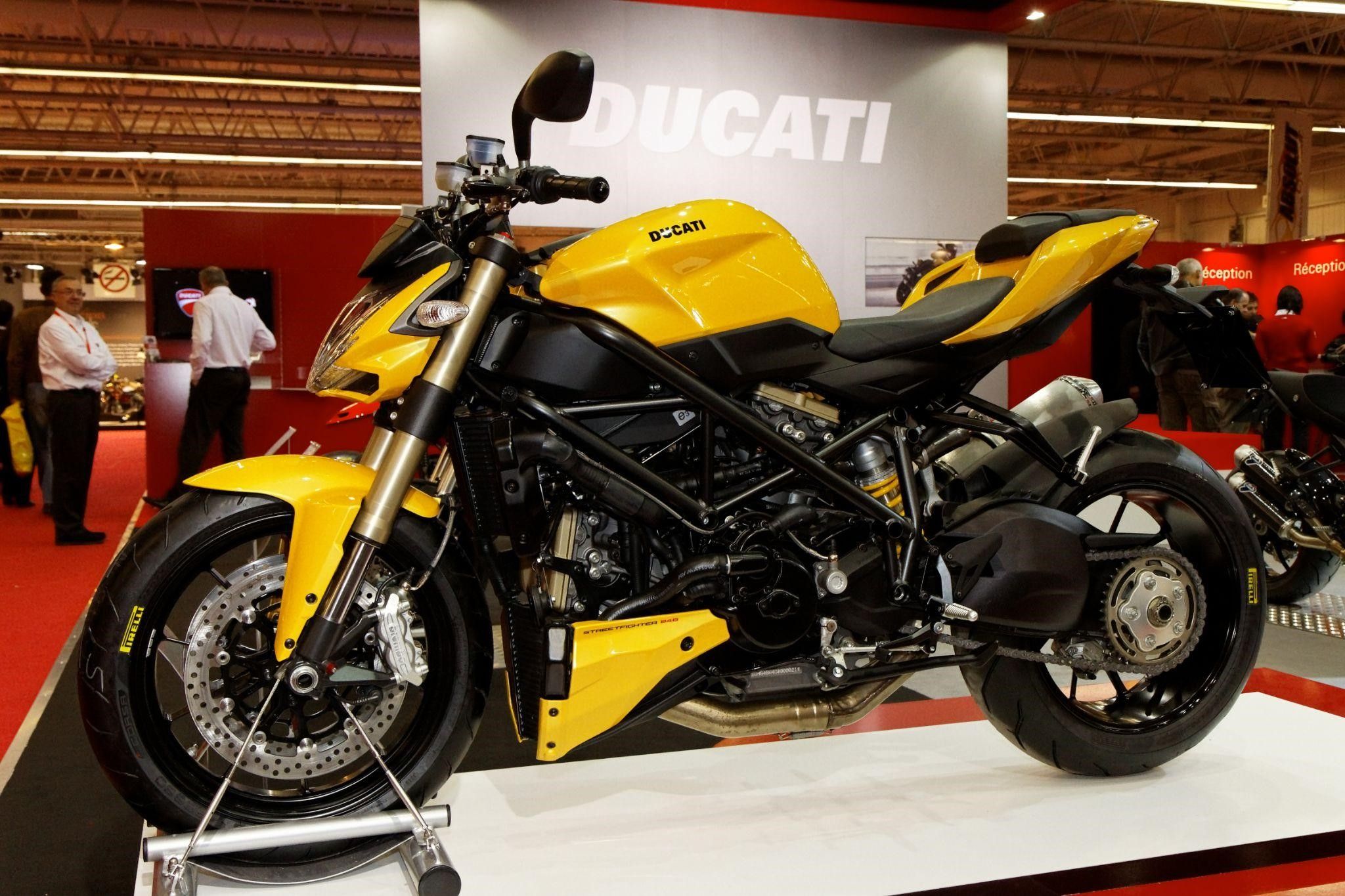
"File:Paris - Salon de la moto 2011 - Ducati - Streetfighter 848 - 001.jpg" by Thesupermat is licensed under CC BY-SA 3.0.
Streetfighters were a bike born out of necessity and thriftiness. When garages received a sport bike with wrecked bodywork but working machinery they would strip off what was broken and Frankenstein some leftover dirt bike parts on instead. The result has become known as a streetfighter, a powerful machine with more comfort and control, endlessly customizable to your style and needs. Due to the personal nature of these bikes, there aren’t many manufacturers producing ready-made varieties, so if you’re interested in learning, try getting to know your local bike garage mechanic.
Minibikes
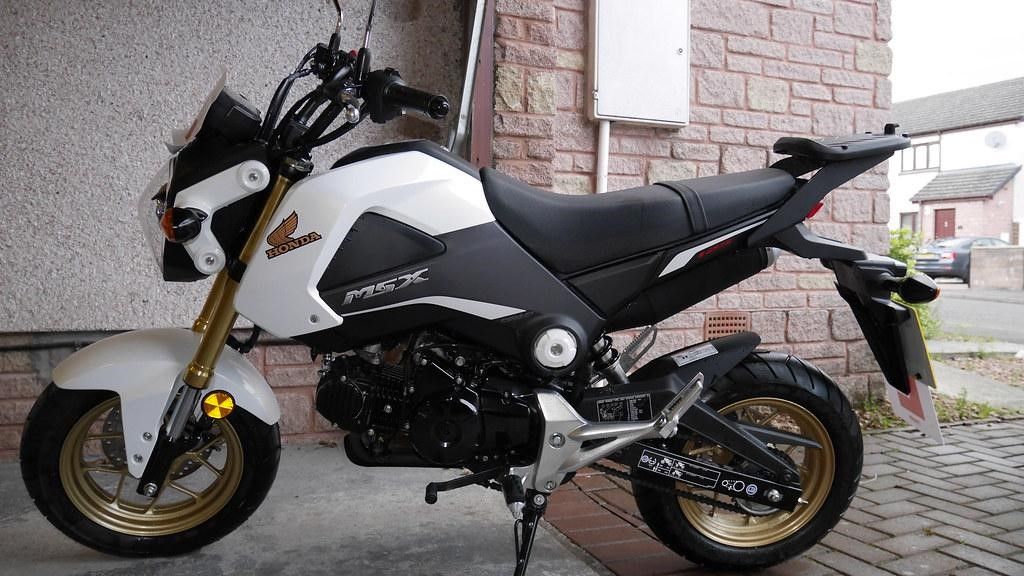
"My Wee Beastie" by Arwen_7 is licensed under CC BY 2.0.
Minibikes are a relatively new trend of machines that are small, fun, and easy to ride. Honda’s 125cc Grom bike from 2013 was one of the first hits of the genre, followed by the Kawasaki Z125 Pro. Both these, and the models they inspired, are street legal but not highway legal, usually topping out at 60mph. Modern minibikes are a great option for bikers who want something affordable, cheap to insure, and fun to ride to commute short distances on. Bear in mind that minibikes are significantly smaller than regular motorbikes, so you’ve got to have your wits about you when it comes to traffic.
Choppers

"Honda Fury" by pyntofmyld is licensed under CC BY 2.0.
Another garage build favorite, the chopper is a classic underground motorbike that has recently got its turn in the limelight. These low-slung bikes with loud, growling engines were long the symbol of outlaws and thugs, but now builders with an eye for aesthetics are revitalizing them for the modern biker. Most choppers are uniquely built and customized with a rider in mind, making them really stand out on the highway. Be warned: this customization comes at a hefty price tag, and the long wheelbase can make them difficult to maneuver through a city environment.
Bobbers
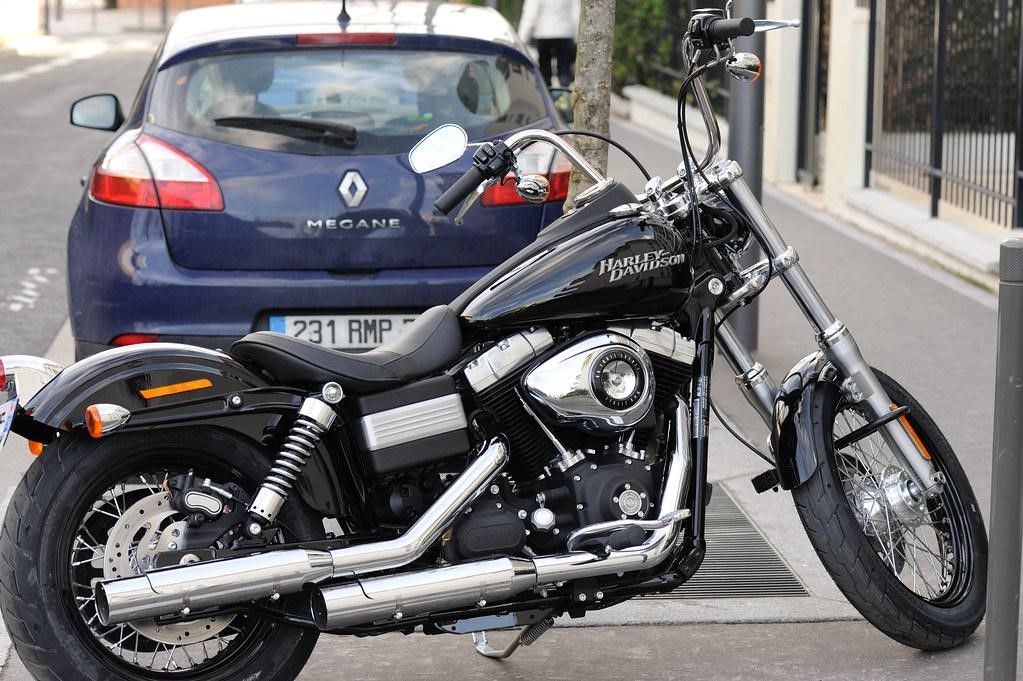
"Harley-Davidson Street Bob" by zenithe is licensed under CC BY-ND 2.0.
Staying in the world of customized bikes, bobbers are as streamlined as modern bikes get. They abandon elements like panels, instruments, and windscreens, and replace them with stylized alternatives. Like choppers, they are infinitely customizable, but bobbers are generally more practical due to their shorter wheelbase, making them an ideal everyday ride. Many amateur and professional garage builders alike can give pretty much any type of bike the bobber treatment, but there are also big brand bobbers available to buy new.
300-Class
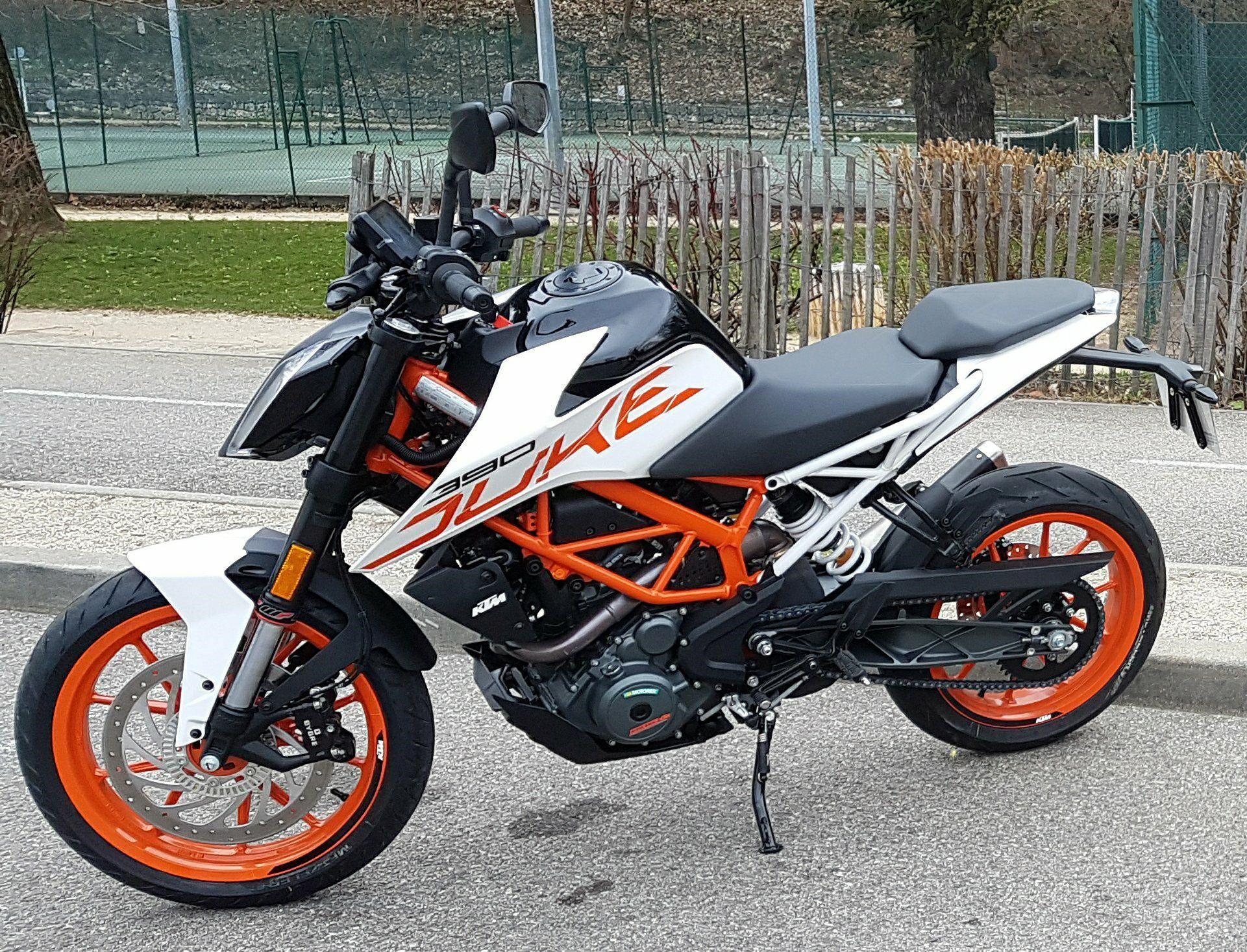
"File:Ktm duke 390.jpg" by 28pg is licensed under CC BY-SA 4.0.
For decades, American and European brands were hyper focused on making world-class big engine bikes. Japanese manufacturers were finding it hard to compete, so focused their attention on the other end of the market: 300 cc engines. Over time, while the rest of the world were fighting over their superbikes, brands like Honda and Yamaha were tuning small-engine bikes to keep pace with (and sometimes outperform) bikes with engines twice the size. Fast forward to today and 300 Class motorcycles are making a comeback. Their smaller engines make them less polluting, more fuel efficient, and cheaper to make and insure, but they still pack enough of a punch to be a solid bike for beginners and experienced riders alike.
Scramblers
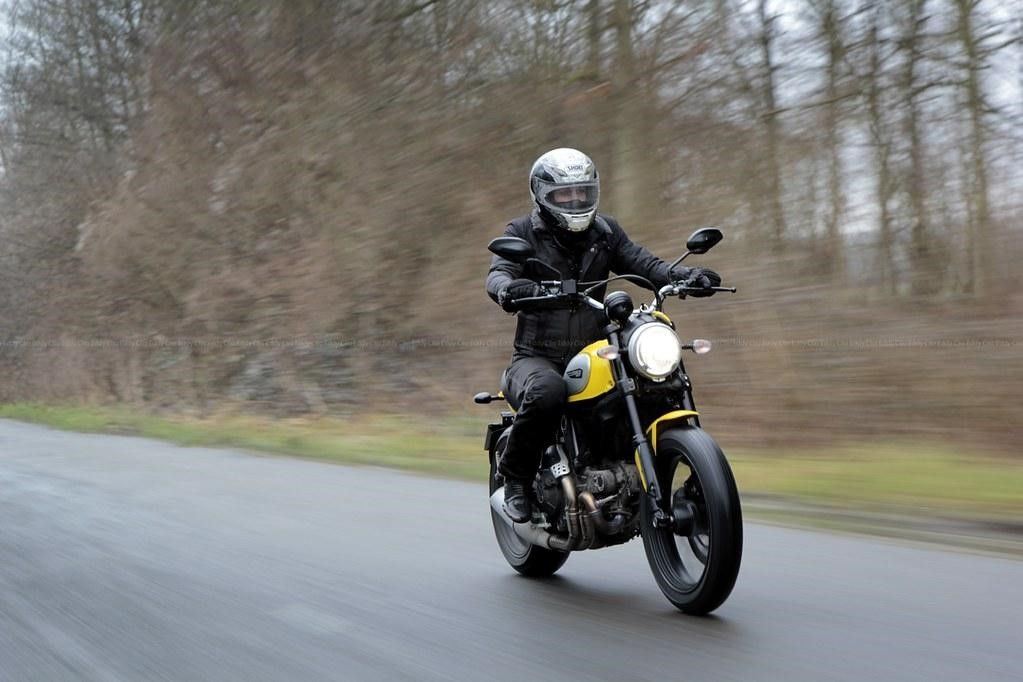
"DUCATI SCRAMBLER" by Eddy Clio is licensed under CC BY-ND 2.0.
Scramblers are another example of a comeback hit from the ‘60s and ‘70s. The original idea was to make street bikes a bit more capable for off-road travel, with more durable tires, a higher mounted exhaust, and optimizing the suspension. Scramblers were still primarily road bikes, but they could hold their own on a dirt path in a pinch, making them ideal for bikers in rural areas with unpredictable terrain. While they were overtaken by better spec dirt bikes and dual sports to a certain extent, modern versions are sleeker and more stylish, with more of a nod to the classic motorcycle look. Some modern scramblers sacrifice a bit of performance both on and off-road by placing themselves in the middle of two worlds, but many are stylish, flexible bike solutions for the rider who wants to go anywhere, anyhow.
Conclusion
Hopefully, the world of modern motorbiking is a bit less mysterious. The amount of choice on the market makes it easier than ever to pick a machine that seems purpose-built for you. And, if one of the major manufacturers doesn't have what you want, you can get a garage builder to literally purpose-build you the perfect machine. As long as you are clear on what you want to use your bike for, what size you want, and how much you want to spend. Armed with that knowledge, and a checklist of features to look for in a new or used motorcycle, it’s only a matter of time before you find your perfect fit (even if you must adjust it a little).
If you still aren’t sure which is the perfect type of motorcycle for you, there’s always time. Bike rental establishments are a great way to really feel out the differences between types to gauge your personal preferences. If there’s nothing on the market that appeals to you yet, you only need to wait a year or two before the big brands or an aspiring gear head brings about the newest trend in biking. And when they do, there’ll be a legion of new bikers ready to get riding.
Updated